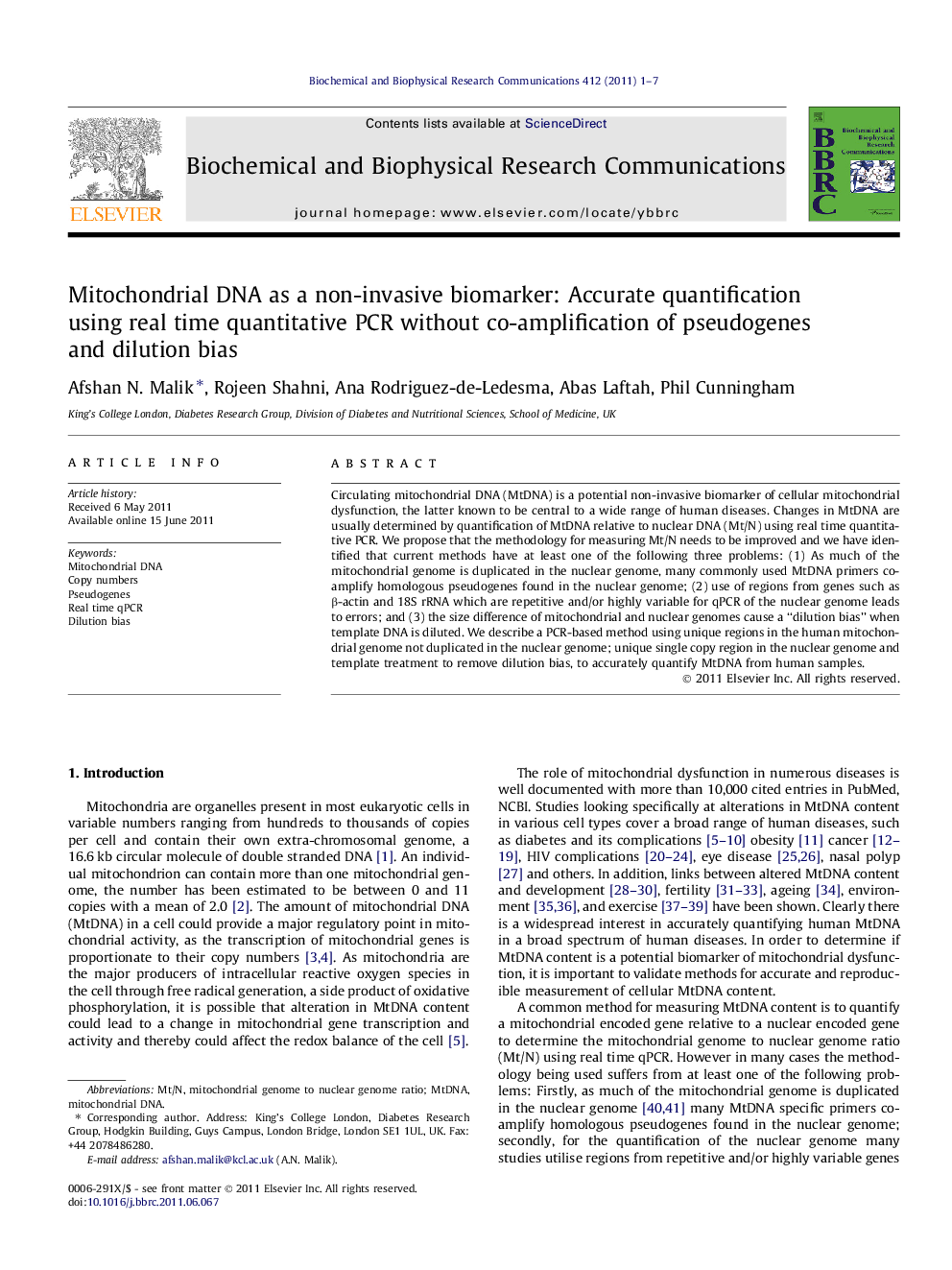| Article ID | Journal | Published Year | Pages | File Type |
|---|---|---|---|---|
| 1930286 | Biochemical and Biophysical Research Communications | 2011 | 7 Pages |
Circulating mitochondrial DNA (MtDNA) is a potential non-invasive biomarker of cellular mitochondrial dysfunction, the latter known to be central to a wide range of human diseases. Changes in MtDNA are usually determined by quantification of MtDNA relative to nuclear DNA (Mt/N) using real time quantitative PCR. We propose that the methodology for measuring Mt/N needs to be improved and we have identified that current methods have at least one of the following three problems: (1) As much of the mitochondrial genome is duplicated in the nuclear genome, many commonly used MtDNA primers co-amplify homologous pseudogenes found in the nuclear genome; (2) use of regions from genes such as β-actin and 18S rRNA which are repetitive and/or highly variable for qPCR of the nuclear genome leads to errors; and (3) the size difference of mitochondrial and nuclear genomes cause a “dilution bias” when template DNA is diluted. We describe a PCR-based method using unique regions in the human mitochondrial genome not duplicated in the nuclear genome; unique single copy region in the nuclear genome and template treatment to remove dilution bias, to accurately quantify MtDNA from human samples.
► Mitochondrial dysfunction is central to many diseases of oxidative stress. ► 95% of the mitochondrial genome is duplicated in the nuclear genome. ► Dilution of untreated genomic DNA leads to dilution bias. ► Unique primers and template pretreatment are needed to accurately measure mitochondrial DNA content.
